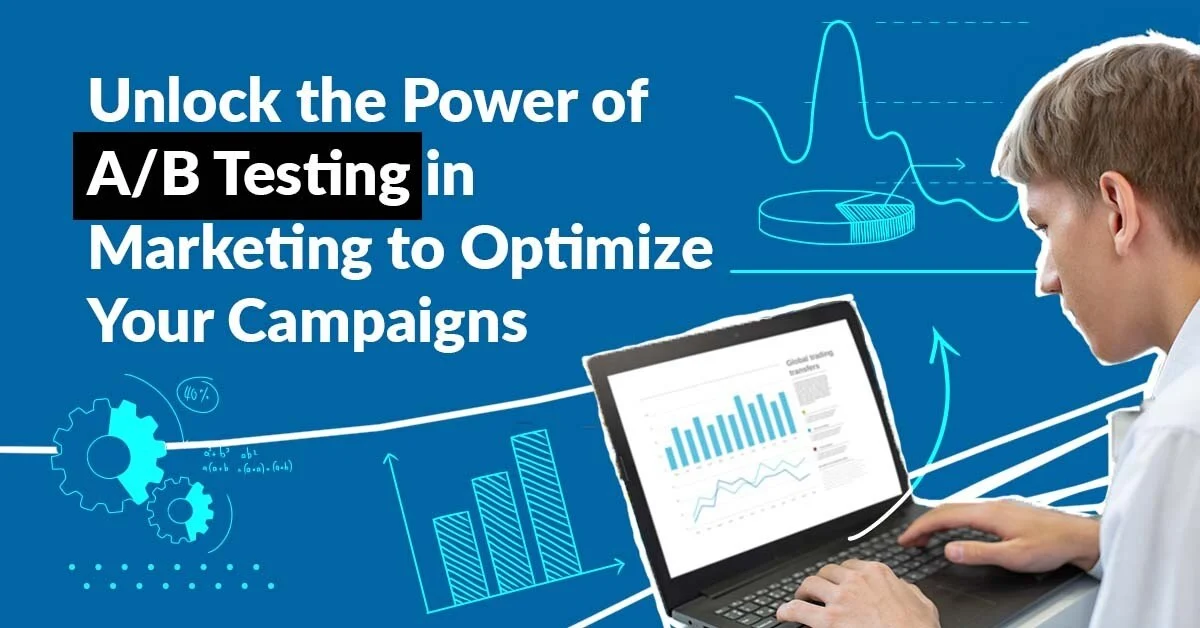In the fast-paced world of digital marketing, understanding what works best for your audience is key to creating successful campaigns. A/B testing, also known as split testing, is one of the most effective ways to optimize your marketing efforts. This method allows you to test different variations of your content, design, or strategies to determine which one performs the best. In this comprehensive guide, we’ll explore the fundamentals of A/B testing and how you can use it to enhance your marketing campaigns.
What is A/B Testing?
A/B testing is a scientific method used to compare two versions of a webpage, ad, email, or other marketing materials to see which one produces better results. The two versions, known as “A” (the control) and “B” (the variant), are shown to different segments of your audience, and their responses are measured against predefined goals such as clicks, conversions, or engagement.
The results of an A/B test give you data-driven insights that help optimize your campaigns, making them more effective and efficient in achieving their objectives.
Why is A/B Testing Important?
A/B testing is crucial for several reasons:
- Data-Driven Decisions: It allows marketers to make decisions based on actual data rather than assumptions or gut feelings.
- Improves ROI: By optimizing marketing materials, you increase the effectiveness of your campaigns, ultimately driving higher return on investment (ROI).
- Better User Experience: A/B testing helps refine website elements and content to create a more engaging and user-friendly experience.
- Continuous Improvement: Testing and tweaking your marketing strategies leads to incremental improvements over time, keeping you ahead of competitors.
Key Components of an A/B Test
Before diving into the process of running A/B tests, it’s important to understand the key components that make up an A/B test:
- Hypothesis: The first step in an A/B test is to identify the problem and form a hypothesis. For example, “If I change the color of the CTA button from blue to red, I believe more users will click on it.”
- Variable: The variable is the element you are changing. It could be anything from headlines, images, CTAs, buttons, or page layouts.
- Control and Variation: The control is the original version, while the variation is the modified version.
- Success Metrics: Identify the metrics that will define the success of the test. Common metrics include click-through rate (CTR), conversion rate, time on page, and bounce rate.
- Audience Segmentation: Ensure that your test audience is divided randomly into two groups, with one group seeing the control and the other seeing the variation.
Steps for Running an A/B Test
1. Define Your Goal
Every A/B test should have a clear objective. Whether you’re trying to increase sales, boost email open rates, or improve website engagement, knowing your goal helps you design the test and measure success effectively.
2. Choose the Element to Test
Determine which part of your marketing campaign you want to test. Some common elements include:
- Headlines: Testing different headline variations to see which resonates best with your audience.
- Call to Action (CTA): Testing the wording, placement, or design of CTA buttons to improve conversions.
- Images and Videos: Changing images or videos can affect engagement rates.
- Forms: Testing form length, field labels, or button placements can improve submission rates.
3. Create Variations
Once you’ve identified what to test, create the variations. Keep the control version (A) as the baseline, and then modify one element at a time for the test version (B). This ensures that you can confidently attribute any changes in performance to the variable you’re testing.
4. Set Up the Test
Use an A/B testing tool, such as Google Optimize, Optimizely, or Unbounce, to create and run your test. These tools allow you to easily set up experiments, randomize visitors to different versions, and track performance.
5. Run the Test
Launch the test and allow it to run for a sufficient period to gather statistically significant data. The length of time needed depends on factors like traffic volume, but a general rule of thumb is to let the test run for at least 1-2 weeks to ensure the results are not skewed by fluctuations in visitor behavior.
6. Analyze the Results
After the test is complete, analyze the results to see which version performed better. Look at the key metrics you defined earlier (such as conversion rate or CTR) and determine whether the changes made a significant impact.
7. Implement Findings
Once you have your results, apply the winning variation across your marketing campaigns, or continue testing additional elements. Over time, this continuous testing process will optimize your marketing efforts and increase effectiveness.
Best Practices for A/B Testing
- Test One Variable at a Time: Testing multiple variables simultaneously can make it difficult to understand what actually caused the change in performance. Stick to testing one element at a time for clearer results.
- Use Statistical Significance: Don’t make decisions based on small sample sizes. Ensure your test has enough traffic to reach statistical significance, which means the results are reliable and not just due to chance.
- Test Across Different Devices: User behavior can vary significantly across desktop, tablet, and mobile devices. Run tests on all platforms to ensure your changes are effective across devices.
- Segment Your Audience: Not all visitors are the same. Try segmenting your audience by demographics, behavior, or other factors to see if specific variations perform better for certain groups.
- Avoid Confirmation Bias: A/B testing should be objective. Be open to unexpected results and avoid the temptation to interpret data in a way that confirms your original beliefs.
Common Mistakes to Avoid
- Testing Too Many Variables: Overloading your tests with too many changes can make it difficult to determine which specific variable caused the change in performance.
- Stopping the Test Too Early: Cutting off the test prematurely can lead to inaccurate results. Let the test run long enough to collect a large enough sample size.
- Ignoring Statistical Significance: Without statistical analysis, you may be making decisions based on data that’s too small to be reliable.
- Overlooking Small Wins: Sometimes, even small improvements can lead to significant long-term gains. Don’t dismiss minor changes if they produce incremental improvements.
Tools for A/B Testing
Several tools can help you run effective A/B tests:
- Google Optimize: A free tool that integrates seamlessly with Google Analytics and allows you to test different variations of your website or landing pages.
- Optimizely: A robust A/B testing tool that helps businesses test and optimize websites, mobile apps, and more.
- VWO: Provides A/B testing, multivariate testing, and split URL testing, with advanced targeting and segmentation options.
- Unbounce: Ideal for landing page optimization, Unbounce allows you to easily create and test multiple landing page variations.
Conclusion
A/B testing is an essential component of modern digital marketing. By continuously testing and optimizing elements of your marketing campaigns, you can make informed decisions that lead to better user experiences, higher conversions, and increased revenue. Follow the steps outlined in this guide, implement best practices, and avoid common mistakes to run successful A/B tests that will have a positive impact on your marketing efforts. With the right tools and strategies in place, you can ensure your marketing campaigns deliver the best results possible.

